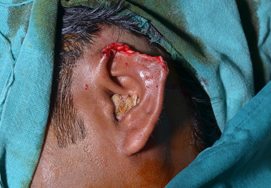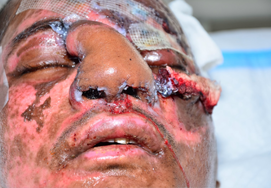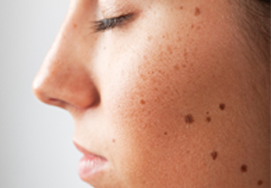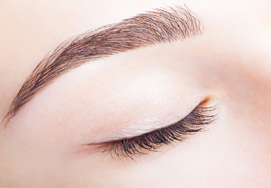Aesthetic Nasal Reconstruction
Suitable for people with nasal deformities due to fracture, skin cancer removal or other injuries

- What is nasal reconstruction?
- What are the types of the surgeries?
- Which individuals are eligible for the surgery?
- Which individuals are not eligible for the surgery?
- How should I prepare for the surgery?
- What is the aftercare of the surgery?
- What are the postsurgical considerations?
What is nasal reconstruction?
The nose occupies a most prominent place in the center of the face and it has an obvious aesthetic significance. People demand restoration of nasal anatomy by reconstruction following disfigurement by developmental disorder, injury, burns, cancer or infection.
Nasal reconstruction technique used to reconstruct different kinds of nasal defects. It repairs nasal deformities due to trauma, cancer, and malformed or missing nasal anatomy. It is an important and technically demanding procedure performed for all nasal injuries.
What are the types of the surgeries?
The nose is a complex three-dimensional structure and along with the eyes, represents a major aesthetic focus of the face.
There are different types of nasal reconstruction surgeries.
Simple Suture Closure
This procedure is used when the deformity is a simple cut or an injury without skin loss. This surgery is performed when there is a limited amount of extra skin on the nose, and also to correct the small defects less than 4-5 mm in the upper nose. It can be sutured and closed without distorting the remaining tip or nostrils.
Secondary Intention Healing
It is used for very small defects on the flat or concave surfaces of the nose.
Skin Grafts
It is used for small, superficial defects, which has a good vascular bed. It is often performed after the cancer excision or trauma and when the wound begins to heal. The usefulness of the skin graft is determined by the site, size, and the depth of the defect. They are quite effective, skin grafts may be full thickness or partial thickness skin grafts depending upon choice of the surgeon and patient.
Local Flaps
Local flaps are performed when there is a small soft tissue defect over the nose. The defect can be covered by using local flaps from surrounding tissue, which is like borrowing tissue from surrounding tissue. These flaps cover defects upto 1 to 1.5 cm in width.
Regional Flaps
The regional flaps move more tissue from the facial areas adjacent to the nose like forehead, cheek, nasolabial area or retroauricular region. . Depending on the site, size, shape, and the depth of the wound, these areas can better provide tissue for large, more complex repairs. These are more complex surgeries but they often give better result.
One Stage Nasolabial Flap
Small defects less than 1.5 cm within the nasal ala or sidewall can be repaired with a tongue of tissue elevated along the Nasolabial fold and advanced or moved inward to cover the side of the nose and ala. It is a single procedure.
Two Stage Nasolabial Flap
It is performed in two stages, apart from three to four weeks. Larger, deeper defects limited to the ala may be repaired by using this procedure.
Forehead Flap
The forehead flap is one of the oldest recorded surgical techniques for nasal reconstruction. As the gold standard for nasal soft tissue reconstruction, the forehead flap provides a reconstructive surgeon with a robust pedicle and large amount of tissue to reconstruct almost any defect.
This type is used when the defect is deep, large, or requires replacement of lining or cartilage support.
One should remember that 3 to 4 weeks of flap inconvenience is a small price to pay for a lifetime of a correct nasal reconstruction
Which individuals are eligible for the surgery?
Age is not a contraindication for forehead flap reconstruction, forehead flaps can be safely done for patients of 90 with comorbid disease
People with nasal deformities due to fracture, infection, burns, skin cancer removal or other injuries are suitable for the surgery.
Which individuals are not eligible for the surgery?
The individuals who have following conditions are not suitable for the surgery:
- Uncontrolled sugars
- Uncontrolled blood pressures
- Active skin infection
- Coagulopathy
- Compromised vascular supply of the flap
- Chronic malnutrition
- Systemic diseases that affects wound healing
How should I prepare for the surgery?
Before the surgery
- Complete blood work up
- Pre-operative evaluation by anaesthetist for anaesthesia fitness
- Consult with the doctor
- Wear comfortable clothing
- Quit alcohol and smoking for few days
- Avoid taking drugs which cause allergic reactions
What is the aftercare of the surgery?
You need to take care after the surgery and follow these instructions for fast recovery.
- Avoid putting pressure on your nose.
- Do not bend your head below the heart level.
- Sleep well before surgery
- Keep your mouth clean
- Sneeze by opening your mouth
- Avoid smoking and drinking for ten days
What are the postsurgical considerations?
Complications of nasal reconstructive surgery:
- Minor bleeding
- Hematoma
- Bacterial infection
- Injury to nerves
- Bruising and swelling
- Altered sense of smell
- Graft infection
- Altered breathing














